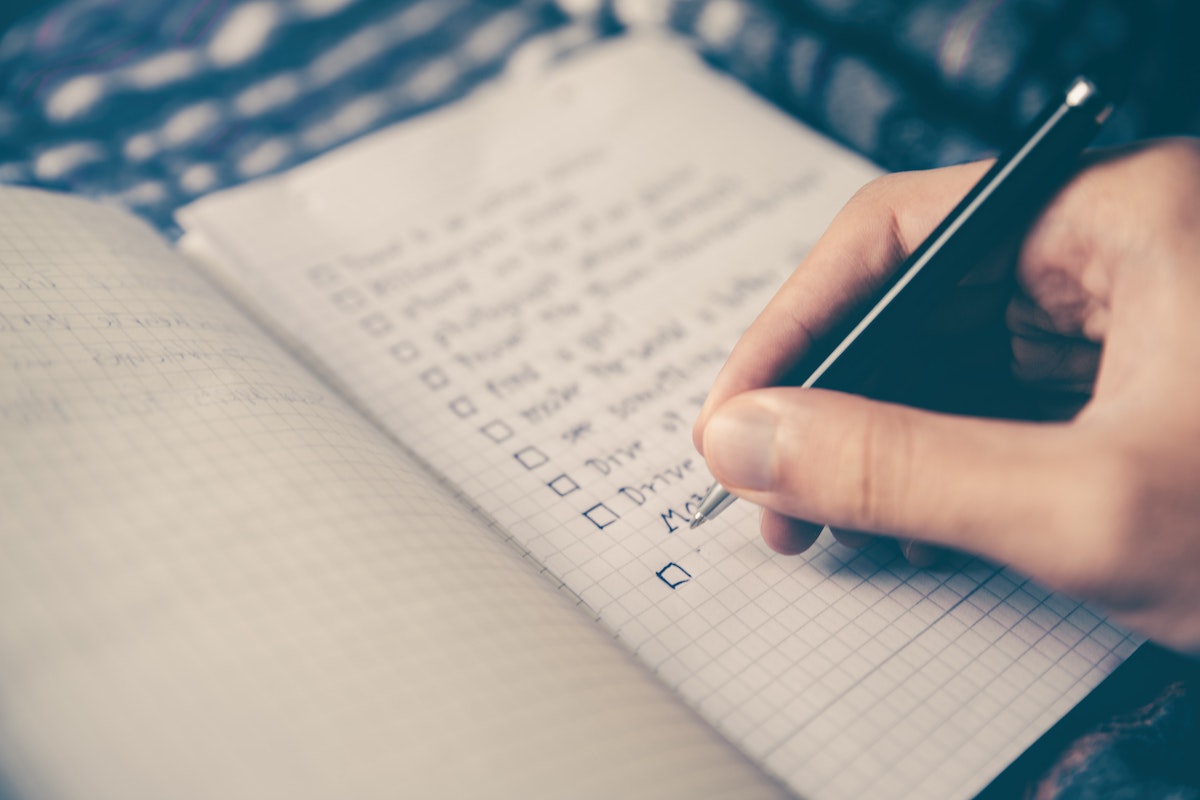
4 Best Budget Ideas for Digital Nomads: Zero Sum, Envelope Budgeting & More
By: Nick Callos
Skip to Section
Article Summary
Being a digital nomad doesn’t mean you have to live on instant noodles and Wi-Fi scrounging. With the right budget strategy, you can travel the world and stay financially fit.
This guide walks you through three budget methods—zero-sum, 50/30/20, and envelope budgeting—and tailors them for nomadic life. Whether you’re tutoring English in Vietnam, writing from a beach in Portugal, or hopping between hostels in South America, you’ll learn how to plan, track, and optimize your spending.
- Zero-sum budgeting gives every dollar a job—ideal for type-A planners who love spreadsheets.
- The 50/30/20 method balances needs, wants, and savings with a flexible and straightforward approach.
- Envelope budgeting lets you categorize and cap your spending (digitally, unless you enjoy traveling with a suitcase full of cash).
- Bonus tips include staying a month ahead, using apps like Mint or EveryDollar, cooking when possible, and making the most of travel rewards.
- Focus on keeping food, lodging, and transportation costs low—those are the big-ticket items.
How can you afford to travel the world constantly?
You’ve heard that question before. I’ve jokingly told people I won the lottery! They typically don’t believe me, though.
Then I explain how it’s done, how you can work and make money as you travel. That’s what the digital nomad lifestyle is all about! A constant workcation.
Of course, making your way to your bucket list destinations can cost serious money. If you want to sample the famous Wagyu beef in Japan, you’ll pay a small fortune!
Fortunately, plenty of digital nomad jobs can keep you cash flow positive—as long as you budget wisely. That doesn’t mean living an incredibly frugal lifestyle. You do want to experience exciting adventures, like visiting Antarctica.
But as a digital nomad, you know budgeting gets tricky. The common budgeting methods don’t account for necessary expenses that you have, such as travel insurance, flights, and lodging. However, they can still help you manage your finances as you trot around the globe.
In this article, we’ll put a digital nomad spin on three popular budget methods. We’ll cover zero-sum budgeting, 50/30/20 budgeting, and envelope budgeting, as well as give you travel budget tips to stay on track. This way, you can travel the way you want and stay financially healthy.

Image via Unsplash
The Zero-Sum Budget for Digital Nomads
Also called zero-based budgeting, this method of managing finances puts every penny of your income to use. As an article in NerdWallet says, “in zero-based budgeting, your income minus your expenditures should equal zero.”
Hence the name: zero-sum budgeting.
Now, that doesn’t mean you blow all your money on a lavish spa resort trip (though you could still visit a spa resort if the budget allows). What it means is that you give every dollar a job.
For instance, you could put a certain portion of your income, such as 20%, into savings and investments. Then, you could allocate the rest for your Airbnb stays, transportation, food, sightseeing, and other expenses.
Note: The zero-sum budget for digital nomads works best when you plan a month ahead. So, as a month arrives, you should have all the cash you need for your monthly budget by the 1st of that month. That makes sticking to the plan easier.
Example of a Zero-Sum Budget for Digital Nomads
Let’s say you earn $3,500 per month in after-tax income from travel writing. Your monthly budget should give every dollar of that $3,500 a job.
If you’ll be traveling around Peru for the month, your budget could look like this:
- Lodging: $600 (average of $20 per night)
- Groceries and dining: $400
- Sightseeing, souvenirs, and entertainment: $450
- Transportation (buses, trains, and flights): $450
- Travel insurance (include medical coverage): $50
- I recommend World Nomads for travel insurance. They offer a large selection of plans for backpackers and digital nomads that travel for long periods of time. See their plans here!
- Emergency savings: $250 (this could come in handy)
- Phone plans, travel supplies, and miscellaneous expenses: $100
- Debt, such as student loans: $500
- Savings and investments: $700
Total expenditures equal $3,500—exactly your monthly income.
Yours will certainly look different, but you get the idea. At the end of the month, you have zero dollars left. However, you will have paid down debt and saved money for the future—all while traveling abroad!
The 50/30/20 Budget for Digital Nomads
With the 50/30/20 budget, you separate your income into three categories:
- 50% for needs
- 30% for wants
- 20% for savings and debt
The plan works because, as an article in Investopedia attests, the 50/30/20 budget is “an intuitive and simple plan to help people reach their financial goals.”
For digital nomad budgets, using the 50/30/20 method may look a bit different. After all, travel insurance isn’t a need for someone working in New York City every day of the year. But it is for you.
Example of a 50/30/20 Budget for Digital Nomads
Let’s use the same example above. You make $3,500 in after-tax income. But this time, let’s say you’re traveling in Southeast Asia.
Now, let’s break it down for you:
- 50% for Needs: You take $1,750, or 50% of your income, and use it for necessities. That could include:
- Lodging, such as hostels and homestays
- Food (groceries not dining out)
- Transportation
- Travel insurance
- Emergency savings
- Necessary travel supplies, new clothing, a SIM card, and a first aid kit
- Minimum repayments on any debt you have, such as credit card debt
- 30% for Wants: Take $1,050 of your income and use it for wants. That could include:
- Souvenirs
- Luxury goods
- Dining out
- Going to bars and clubs
- Sightseeing
- 20% for Savings and Debt: Take $700 of your savings and use it for savings and debt. That could include:
- Roth IRA contributions
- Savings account deposits
- Debt repayments more than minimums (chop the principal down faster!)
With a 50/30/20 budget, understand that you have spending ceilings on your needs and wants. If you have extra cash at the end of the month, it’s advised to save, invest, and pay off debt with that money first. But also use a little to have some more fun!
The Envelope Budget for Digital Nomads
As a guide in The Balance notes, the envelope budget method began when we paid for bills in cash. Essentially, you establish expense categories, such as food and transportation, and put limits on how much you could spend. You would then put physical cash in each category’s envelope. Spending would stop once the cash was gone.
Now that we’ve entered the digital age, you can do and track all this digitally. While you still may use cash while abroad, you don’t want all your money for a month laying around your Airbnb in envelopes. That’s risky!
The envelope system suits detail-oriented folks. Because you can identify where you spend too much and where you can save. As you set your envelope budget, evaluate how you did at the end of each month.
Example of the Envelope Budget for Digital Nomads
Again, let’s assume you make $3,500 in after-tax income. But this time, your income comes from a mix of tutoring English and investments you’ve made in semi-retirement. We’re just mixing things up here!
Anyway, you could have the following envelopes:
- Lodging: $500
- Groceries and dining: $300
- Sightseeing, souvenirs, and entertainment: $600
- Transportation (buses, trains, and flights): $400
- Travel insurance (include medical coverage): $50
- Emergency savings: $200 (send this money to a dedicated savings account)
- Phone plans, travel supplies, and miscellaneous expenses: $150
- Debt, such as student loans: $500
- Savings and investments: $700
If you find yourself going over on a certain category, like entertainment, analyze how you can reduce those expenses. Or, reorganize the budget so that the envelopes have more realistic spending amounts.
Travel Budget Tips for All Your Journeys
Setting up a digital nomad budget is one thing. Sticking to it is another. You need the right tools and discipline to execute that budget successfully.
Travel budget tips can help. Here are a few strategies to use:
- Stay one month ahead: This can be hard at first. But try not to live paycheck to paycheck. For example, your income from February, which you may receive in early March, could be used for April’s budget. Of course, how this exactly works for you depends on when you get paid. Just make sure you have your entire month’s budget on hand by the 1st of that month.
- Shop around! You can save serious money on travel insurance, flights, hotels, and more.
- Use budgeting apps. They streamline expense tracking and give you visual data on where you could save. I recommend personal finance apps like Mint and EveryDollar.
- Cook your own meals. This can get tough on the road. But if you rent an apartment temporarily, you will have access to a kitchen. Take advantage.
- Use travel points. As you roam the world, you’ll undoubtedly accrue airline miles and hotel points. If you have a travel credit card, you can even earn lucrative rewards, such as free international flights! Just use the credit card wisely.
- Here’s an extra travel budget tip: Check sites like Million Mile Secrets and The Points Guy for ways to use credit card rewards to save on travel.
- Focus on affordable food, accommodation, and transportation. These three expense categories eat up the biggest portion of your budget. Eat like a local wherever you go (it’s good and affordable). Opt for economy-style lodging. And save money by taking public transportation.
- Review your budget monthly. Identify issues and adapt to changing situations (like a few weeks in a more expensive country). This enables you to optimize your budget and manage your finances even better.
Travel Well with Financial Peace of Mind
Now, you know all about how to make a digital nomad budget. You also have travel budget tips to help you stay on track. Choose the budget method that fits you best, and you’ll be in a better position to succeed.
All that’s left to do is create and implement your budget. Once you’ve done that, get on with your travels and enjoy life to the fullest!
About the Author
Nick Callos has always had a passion for reading, writing, and discovering the new and unknown. Originally from Cincinnati, Ohio, Nick holds a Bachelor’s Degree in English from Boston College. He currently splits his time between his hometown, Chengdu, China, and the open road. A full-time travel writer, Nick hopes his work can inspire others to explore the world more deeply and enjoy the digital nomad lifestyle.Featured image via Unsplash.
Information published on this website and across our networks can change over time. Stories and recommendations reflect the subjective opinions of our writers. You should consult multiple sources to ensure you have the most current, safe, and correct details for your own research and plans.
Frayed Passport is a participant in the Amazon Associates Program, an affiliate advertising program designed to provide a means for sites to earn advertising fees by advertising and linking to Amazon.com. We also may share links to other affiliates and sponsors in articles across our website.




